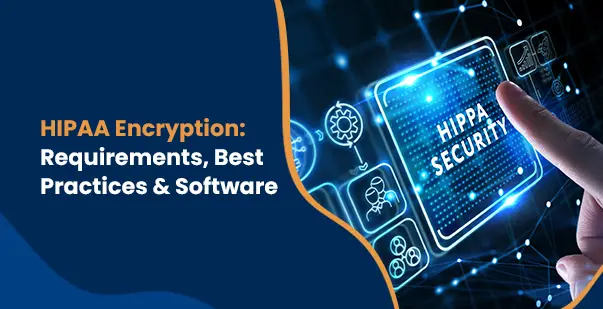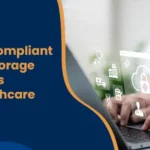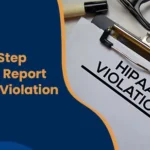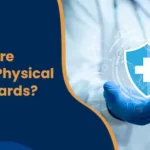HIPAA Encryption: Requirements, Best Practices & Tools

September 10, 2025
In the digital age, healthcare data is a high-value target. Every day, providers, insurers, and business associates face real risks of data breaches. That’s why meeting HIPAA encryption requirements isn’t just a box to check—it’s a must for protecting patient privacy and staying compliant. Whether you’re emailing patients, managing cloud-based storage, or handling mobile devices, understanding HIPAA encryption is key to safeguarding electronic protected health information (ePHI) and earning patient trust.
What HIPAA Says About Encryption
HIPAA (Health Insurance Portability and Accountability Act) sets national standards to protect sensitive patient information. It doesn’t tell you exactly how to encrypt data. Instead, it calls encryption an “addressable” safeguard. That means if it’s reasonable and appropriate for your setup, you must do it. If not, you need a solid reason and a documented alternative, including evidence of other effective measures taken.
Bottom line? If you’re storing or sending ePHI, regulators expect you to protect it. HIPAA-compliant encryption is the most common and effective way to do this, especially in two key situations:
Data at rest: Stored on servers, laptops, hard drives, USBs, or internal databases
Data in transit: Sent via email, web apps, APIs, or file-sharing tools across networks
Many organizations mistakenly think encryption is optional under HIPAA. But if there’s a breach and you didn’t encrypt or document why not, you could face serious penalties. The 2025 HIPAA Journal emphasized this, urging companies to follow NIST guidelines to avoid trouble and reduce the risk of HIPAA violations.
Encryption Standards to Follow
Using strong encryption methods helps you stay compliant and secure. Here are two recommended standards:
AES (Advanced Encryption Standard): Use at least 128-bit keys, ideally AES-256, for stored data
TLS (Transport Layer Security): Use for sending data over networks, like email or browsers
These standards are trusted and widely recommended by the U.S. Department of Health and Human Services (HHS) and the National Institute of Standards and Technology (NIST). They serve as a solid benchmark for any healthcare organization aiming to remain secure. See HHS’s guidance on encryption.
If your team uses mobile devices like phones or laptops, the risks grow. Always encrypt these devices to protect ePHI if they get lost or stolen. It’s also important to enable remote wipe capabilities and regularly update device firmware.
When working with cloud services:
- Make sure they offer HIPAA-compliant encryption with transparent documentation
- Ensure they’ll sign a Business Associate Agreement (BAA) with clearly defined roles
- Review their certifications (SOC 2, ISO 27001) and audit logs often to ensure ongoing compliance
You should also encrypt:
- Internal databases used by applications and dashboards
- Messaging apps like Slack or Microsoft Teams that contain sensitive discussions
- Shared file systems between teams or departments
And remember, encrypting is just the start. You also need to manage encryption keys securely, rotate them regularly, monitor access activity, and keep systems updated with patches. Encryption is a strong line of defense, but it only works when actively maintained.
Staff Training and Internal Policies
Even with strong tools, human error is a top cause of HIPAA violations. Staff clicking on phishing emails, using weak passwords, or saving unencrypted files can open the door to serious data breaches and investigations.
Here’s how to reduce those risks:
- Train all staff to handle ePHI securely, including temporary and contract workers
- Show them how to spot phishing, suspicious links, and common red flags
- Keep records of training sessions, policy updates, and attendance for audits
Everyone should know:
- When encryption is required and why
- How to use secure platforms for communication and data storage
- What steps to take immediately after discovering a breach or security incident
Make this training a regular part of onboarding and performance reviews. Refresh it at least annually, and tailor content for specific roles. You can also appoint a security officer or committee to run breach simulations, update policies, and ensure every department aligns with HIPAA encryption requirements.
Recommended Encryption Tools
There are plenty of software options offering HIPAA-compliant encryption. Some of the best include:
- VeraCrypt: Great for encrypting local files and drives, especially on physical devices
- AWS & Microsoft Azure: Trusted cloud platforms that can be HIPAA-ready when set up correctly with compliance documentation
- ProtonMail & Paubox: Secure email platforms built for healthcare, offering encrypted communications with ePHI protection
Avoid tools that:
- Use outdated encryption protocols like SSL or deprecated ciphers
- Don’t clearly explain their encryption process in plain language
- Lack third-party audits, compliance certifications, or documentation support
Refer to NIST SP 800-111 for encryption best practices.
Always test tools in a sandbox before rolling them out to your entire organization. This helps you catch problems early, minimize downtime, and ensure the software integrates with your current systems.
How to Pick the Right Software
Don’t settle for the first product labeled “HIPAA-compliant.” Look for these features:
- End-to-end encryption for data across devices and applications
- Centralized encryption key control and detailed access logs
- Built-in audit tools and exportable compliance reports
- Role-based access management to prevent unauthorized access
- Certifications like ISO 27001, SOC 2 Type II, or FedRAMP (for federal systems)
Red flag: If a vendor can’t explain their encryption or refuses to show documentation, it’s time to move on.
Also consider:
- Does the software integrate with your electronic health record (EHR) system?
- Can it scale as your organization grows or expands to multiple locations?
- Does the vendor offer help with onboarding, training, and ongoing compliance documentation?
Those extras can really help during audits, staff transitions, or in times of crisis. Strong support can also ease the burden on your internal IT or compliance team.
Real-Life Wins and Mistakes
Here are some quick examples of encryption working—and not:
- A hospital encrypts cloud backups with AES-256. Hackers fail to get patient data. No fines, no public crisis, and no loss of trust.
- A clinic emails unencrypted lab results. One goes to the wrong recipient. They have no signed BAA or proof of encryption and face penalties, negative press, and internal investigations.
- A telehealth startup trains developers but skips training for customer service. A support rep stores unencrypted ePHI on their laptop. The issue is found during an audit, triggering retraining, risk assessments, and a reputational hit.
The takeaway? Encryption needs to be part of your daily workflow, team culture, and ongoing operations. Not just a tech feature.
Try simulating breach scenarios involving encrypted and unencrypted data. It’s a great way to spot gaps in both your technology stack and your team’s awareness. Use the findings to create action plans and measure improvement over time.
What Happens If You Don’t Encrypt
Failing to encrypt ePHI can lead to big fines and long-term damage. Here are a few well-known cases:
Anthem Inc.: Paid $16 million after 78 million records were exposed due to insufficient encryption and weak internal protections
Catholic Health Care Services: Fined $650,000 after a lost device contained unsecured patient data without encryption or remote wipe
New York Presbyterian Hospital: Hit with a $2.2 million fine when ePHI was accessed without proper safeguards or documented encryption
HIPAA violations are expensive, but they also hurt your credibility. Patients lose confidence, stakeholders become cautious, and future compliance reviews become more intense.
Organizations that regularly audit their vendors, invest in continuous staff training, and update their tools and procedures are much more likely to avoid these scenarios.
Encryption for New Technologies
As healthcare tech grows, encryption becomes even more important. Here’s where it matters:
Telehealth apps: Secure video and chat logs to protect real-time care delivery
mHealth platforms: Encrypt data collected from fitness trackers, medical wearables, and smartphones
AI/ML tools: Protect training data, outputs, and any patient information used in algorithm development
If your organization uses or plans to use emerging technologies, review your encryption strategy often. What worked in 2022 may not cut it in 2025. Stay ahead by adopting modern encryption protocols and building security into new systems from the ground up.
Also, if you operate across borders or use IoT and edge devices, make sure you understand how encryption standards vary by region. Align your infrastructure to meet both U.S. HIPAA rules and other applicable international standards like GDPR.
Making HIPAA Compliance Stronger
Encryption is essential, but it’s just one part of staying HIPAA compliant. Build a complete plan by:
- Setting up access controls and live system monitoring
- Reviewing and updating risk assessments every quarter
- Tracking who accesses what, and when, across all platforms
Also remember:
- All business associates must meet HIPAA encryption requirements
- Your contracts should clearly define encryption expectations and include a BAA
- Keep well-organized compliance documentation ready for inspections or audits
Being proactive with HIPAA compliance helps you avoid violations, boost patient trust, and improve team accountability. When encryption is part of a larger security strategy, you reduce your risks while strengthening your organization’s reputation.





